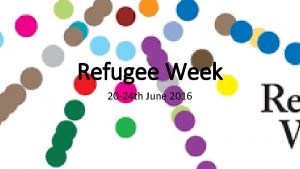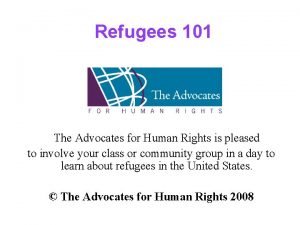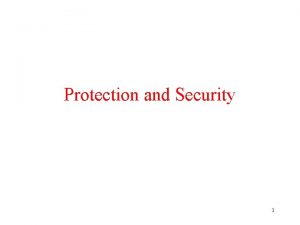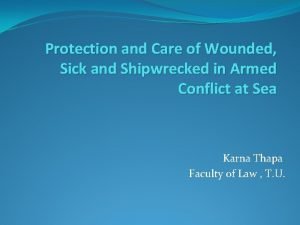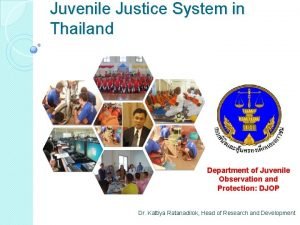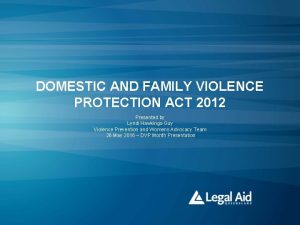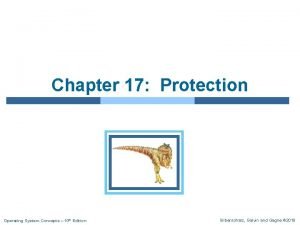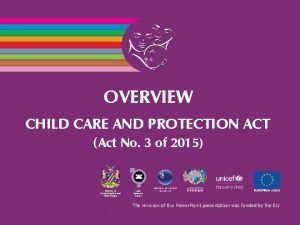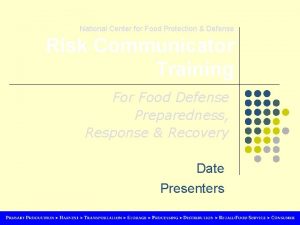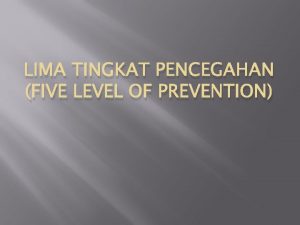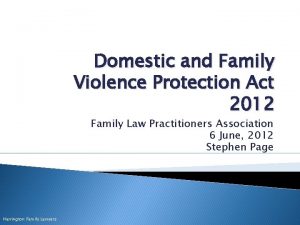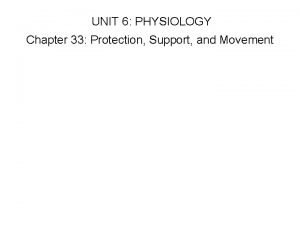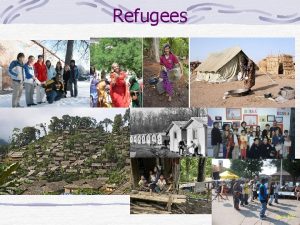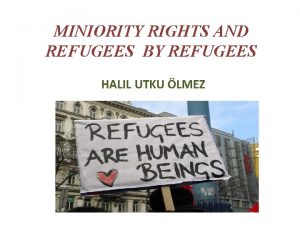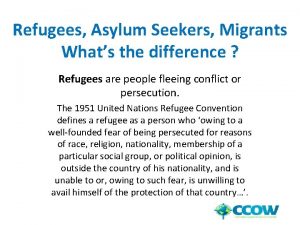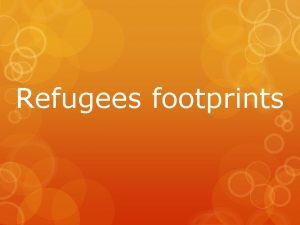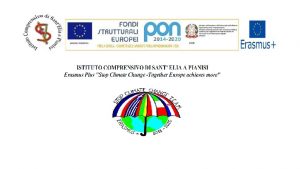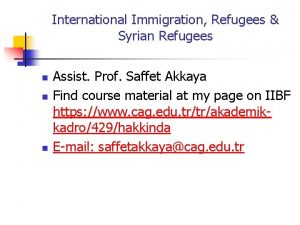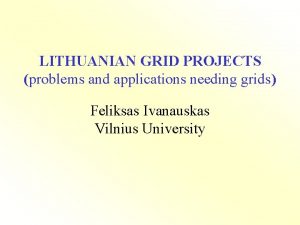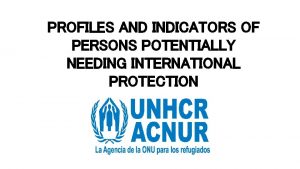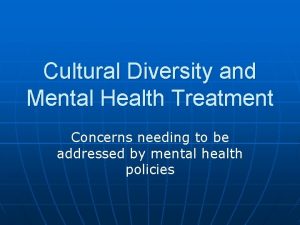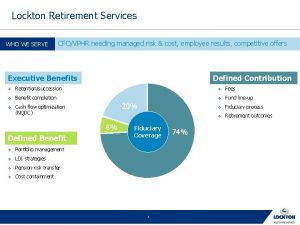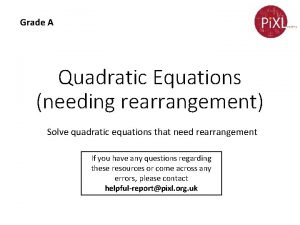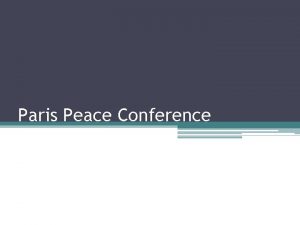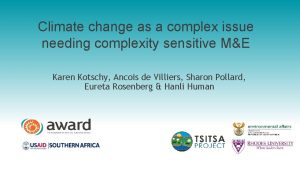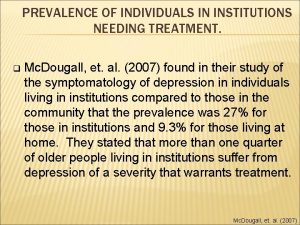Refugees Refugees and people needing protection are people




























- Slides: 28

Refugees • Refugees and people needing protection are people in or outside Canada who fear returning to their home country. • In keeping with its humanitarian tradition and international obligations, Canada provides protection to thousands of people every year. • Canada offers refugee protection to people in Canada who fear persecution or whose removal from Canada would subject them to a danger of torture, a risk to their life, or a risk of cruel and unusual treatment or punishment. • Groups and individuals can sponsor refugees from abroad who qualify to come to Canada.

What is Canada’s Policy Towards Refugees? • U. N. Convention Relating to the Status of Refugees (1951) • Defines refugee as "A person who owing to a well-founded fear of being persecuted for reasons of race, religion, nationality, membership of a particular social group or political opinion, is outside the country of his nationality and is unable or, owing to such fear, is unwilling to avail himself of the protection of that country; or who, not having a nationality and being outside the country of his former habitual residence as a result of such events, is unable or, owing to such fear, is unwilling to return to it. . “ • Excludes people from refugee status (i. e. war criminals)

• 1950 s and 60 s – Canada accepts refugees on a crisis by crisis basis. • 1976 – Canada makes “refugee” an official immigration category, therefore, accepting refugees on a steady basis.



Objectives of the Immigrant and Refugee Protection Act, 2002 • Save lives and offer protection to people who are displaced and persecuted • Fulfill and affirm Canada’s international commitment to protect refuges • Grant fair consideration to people who claim to be persecuted • Offer refuge to people facing persecution

Resettling Refugees • Since most refugees are fleeing bad situations, they often need help to establish themselves in Canada • Private Sponsorship of Refugees Program • Private groups, such as churches, commit to providing financial settlement assistance to refugees for one year or until they can support themselves financially, whichever comes first. • This assistance includes accommodation, clothing and food. • Joint Assistance Sponsorship • Provided to refugees with special needs (trauma because of violence or torture, medical disabilities, effects of systemic discrimination and gender persecution ) • Combined government and private assistance for a maximum of 3 years

• How might the challenges of Refugees be Similar or different from the challenges of other immigrants to Canada?





How do Provinces Influence Immigration Laws? What can we conclude from this map?

• Why might immigrants to Canada choose to settle in Toronto, Montreal, or Vancouver? • An objective of the IRPA is to share the economic benefits of immigration across all of Canada. Based on the map and the following chart, is this happening?


Provincial Nomination Program • Provinces can nominate a percentage of the immigrants Canada selects each year. • The federal government can’t make immigrants settle in a particular area, but they allow provinces to set up incentive programs.



Perceived Changes to Canadian Society • Depending on your perspective, the increased number of visible minority immigrants is either • Great as it adds to Canada’s multicultural heritage and makes us a world leader in race relations • Threatening Canada’s culture and changing our country in a way that is not in the best interest of Canadian-born citizens






Canada’s Visible Minority & Indigenous Population by Region

Is there a threat to non-visible minority populations in Canada? (aka white people) Visible Minorities by Province British Columbia (4, 074, 380): Not a visible minority: 75. 2% Ontario (12, 028, 895): Not a visible minority: 77. 2% South Asian: 6. 6%, Chinese: 4. 8%, Black: 3. 9% Alberta (3, 256, 355): Not a visible minority: 78. 4% Chinese: 10. 0%, South Asian: 6. 4% Chinese 3. 7%, South Asian 3. 2% Manitoba (1, 133, 515): Not a visible minority: 87% Filipino 3. 3%, 17% Aboriginal Quebec (7, 435, 900): Not a visible minority: 91. 2% Nova Scotia (903, 090): Not a visible minority: 95. 8% Saskatchewan (953, 850): Not a visible minority: 96. 4% New Brunswick (719, 650): Not a visible minority: 98. 1% Prince Edward Island (134, 205): Not a visible minority: 98. 7% Newfoundland Labrador (500, 605): Not a visible minority: 98. 9%

• Toronto (5, 072, 070): Not a visible minority: 57. 1% • South Asian 13. 4%, Chinese: 9. 6%, Black: 6. 9%, Filipino: 3. 4% • Vancouver (2, 097, 965): Not a visible minority: 58. 3% • Chinese: 18. 2%, South Asian: 9. 9%, Filipino: 3. 8% • Calgary (1, 070, 295): Not a visible minority: 77. 8% • Chinese 6. 2%, South Asian 5. 4% • Edmonton (1, 024, 825): Not a visible minority: 82. 9% • Chinese 4. 6%, South Asian 3. 9% • Montreal (3, 588, 520): Not a visible minority: 83. 5% • Black 4. 7% • Ottawa-Gatineau (1, 117, 120): Not a visible minority: 84. 0%, • Black 4. 0% • Winnipeg (686, 040): Not a visible minority: 78. 6% • Filipino: 8. 7%%, South Asian: 3. 5%, Aboriginal: 11. 7% • Quebec City (704, 185): Not a visible minority: 97. 7%

Consider: 1) Are you in favour of or opposed to increased immigration in Canada’s future? Why? 2) Has your family, or relative, moved to a new country, city or province? What push/pull factors may have been a factor in there decision? 3) How does immigration affect Canadian Identity?
 Mikael ferm
Mikael ferm Refugees brian bilston lesson
Refugees brian bilston lesson Emigration definition ap human geography
Emigration definition ap human geography Capoeira 4 refugees
Capoeira 4 refugees Refugees
Refugees Capoeira songbook
Capoeira songbook People media module
People media module Where is the love black eyed peas lyrics
Where is the love black eyed peas lyrics Protection support and locomotion answer key
Protection support and locomotion answer key Safeguarding and child protection the essentials
Safeguarding and child protection the essentials Pulp protection liners and bases
Pulp protection liners and bases Security and protection in operating system
Security and protection in operating system Protection of wounded, sick and shipwrecked
Protection of wounded, sick and shipwrecked Department of juvenile observation and protection
Department of juvenile observation and protection What are protection goals and principles
What are protection goals and principles Security and protection in operating system
Security and protection in operating system Domestic and family violence protection act 2012
Domestic and family violence protection act 2012 E commerce security and fraud protection
E commerce security and fraud protection E-commerce security and fraud protection
E-commerce security and fraud protection Security and protection in operating system
Security and protection in operating system Portfolio construction management and protection
Portfolio construction management and protection Pulp protection liners and bases
Pulp protection liners and bases 29 cfr 1910 regarding face head foot and hand protection
29 cfr 1910 regarding face head foot and hand protection Children rights and responsibilities
Children rights and responsibilities National center for food protection and defense
National center for food protection and defense Five level of prevention
Five level of prevention Goals and principles of protection in os
Goals and principles of protection in os Domestic and family violence protection act 2012
Domestic and family violence protection act 2012 Chapter 33: protection, support, and movement answers
Chapter 33: protection, support, and movement answers

